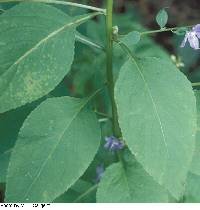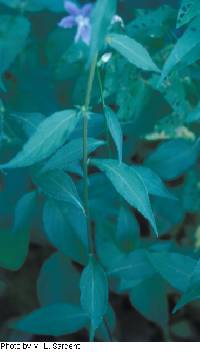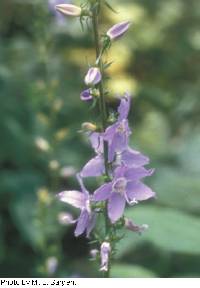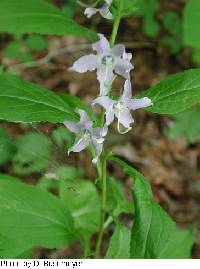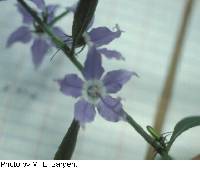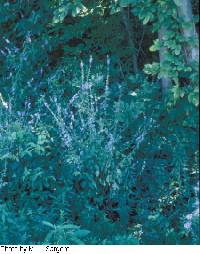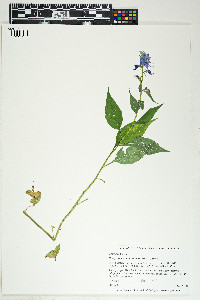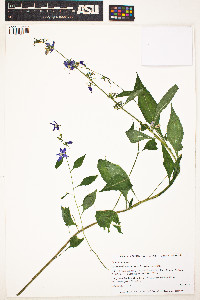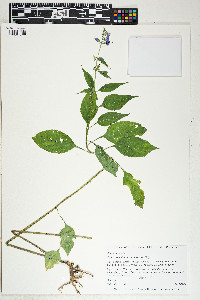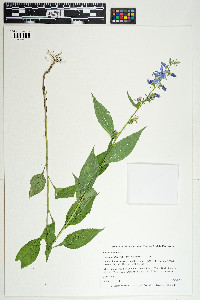Annual or biennial herb 0.5 - 2 m tall
Stem: coarse, erect, unbranched or sometimes freely branching. If the stem is broken or cut, it exudes milky sap.
Leaves: alternate, stalked, toothed, more than 1 cm wide, longer than wide, with a slender tip, and a tapering base, which sometimes continues down onto the slightly winged stalk.
Inflorescence: of elongate spikes up to 60 cm long, with flowers clustered (or single) in the axils of bracts. Lower bracts leaf-like, but upper ones reduced.
Flowers: blue, 2 - 2.5 cm wide, radially symmetric, with five spreading lobes.
Sepals: five, but fused at base, then separating into 5 - 10 mm long, linear, spreading lobes.
Petals: five, but fused into a tube at the base, then separating into spreading, somewhat egg-shaped lobes. The petal tube elongates with age.
Stamens: five, with filaments attached to the very base of the petal tube, and the anthers extending beyond the petal lobes.
Pistil: with a single, three-chambered, inferior ovary; and a single, long, down-curved style, which curves upward before ending in a three-lobed stigma.
Fruit: a many-seeded, three-chambered, 7 - 12 mm long, almost cylinder-shaped, hairless capsule, which opens by round pores located near the top.
Similar species: Campanula americana is superficially similar to the non-native, European species, C. rapunculoides, but that species has non-spreading flower lobes, capsule pores located near the base, and non-tapered, often heart-shaped leaf bases with no leaf tissue continuing onto the leaf stalks. All other species of Campanula are smaller and more delicate with bell-shaped or funnel-shaped flowers.
Flowering: July to early November
Habitat and ecology: Common in rich woodlands, shaded floodplains or moist borders, usually preferring rich moist soil and somewhat open or even semi-disturbed areas such as trails, edges of fields, and railroads.
Occurence in the Chicago region: native
Notes: This is the only species of Campanula with wide-spreading petals, a petal tube which elongates in age, stamens which reach up and over the petals, pantoporate pollen (pores spread over the surface, possibly in a regular pattern), and a capsule which opens by subapical valves. Accordingly, this species has often been separated into its own genus, Campanulastrum.
Author: The Field Museum


